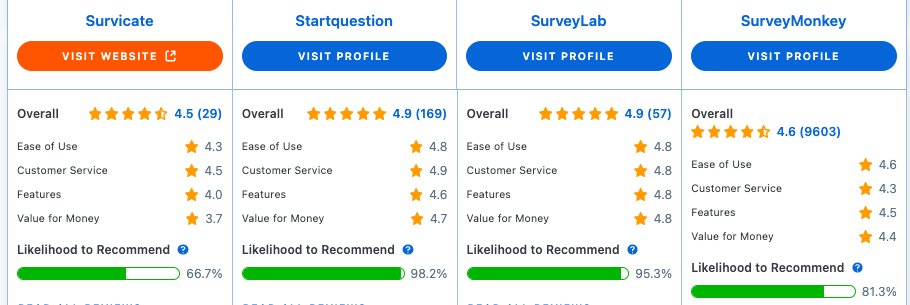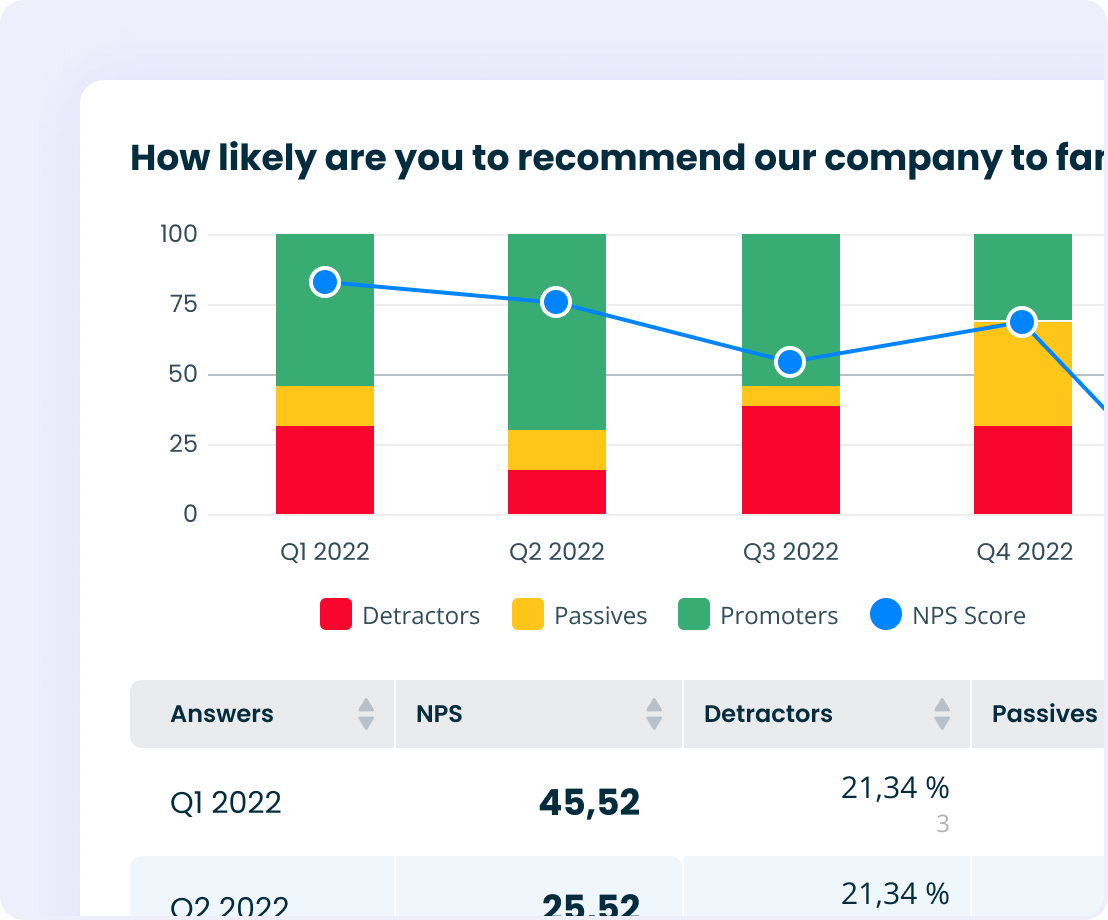Collecting customer feedback is essential for market research and businesses looking to improve their products and services, enhance customer experiences, and build lasting customer relationships. However, acquiescence bias presents a subtle yet significant challenge when analyzing customer feedback.
This article will explore the nuances of acquiescence bias in survey research and provide practical strategies to mitigate its impact.
What Is Acquiescence Bias?
Let’s start with a brief definition.
Acquiescence bias is a response bias in which respondents tend to agree with statements or questions, offering accurate responses, regardless of their true feelings or opinions. This bias can skew survey results by artificially inflating agreement rates. It may occur for various reasons, such as social desirability or a lack of engagement with the survey questions.

When Acquiescence Bias Occurs? Examples
Any survey question that starts with “Do you agree that?” is an example of what experts call agreement bias. These types of questions suggest an answer, which negatively affects survey data. It’s quite a temptation, but for meaningful feedback, you need honest answers, not confirmation of convenient statements for the management.
Here are a couple of examples to illustrate potential bias in survey responses.
Survey on Employee Satisfaction:
A company might conduct employee surveys to assess their satisfaction with the work environment. One of the online survey questions could be, “Do you feel valued by your employer?” (you feel like you have to answer positively, right?).
People with acquiescence bias might agree with this statement, even if they don’t genuinely feel valued. They might feel it is socially desirable to appear satisfied with their job.
Product Feedback Survey:
Customer surveys seeking feedback on a product often contain a question like, “Did this product help solve your problem?”. However, some respondents may have acquiescence bias, leading them to agree with this statement even if the product didn’t meet their needs.
It can happen because they want to avoid conflict or appear agreeable instead of providing honest feedback about their experience with the product.
How Inaccurate Response Biases Your Data
In both examples, acquiescence bias can lead to inaccurate interpretations of the data collected from the surveys, as the high agreement rates may not truly reflect respondents’ genuine opinions or experiences.
We’ll explore the ways to avoid acquiescence and encourage honest answers a bit later.
First, let’s answer another important question.
What Causes Acquiescence Response Bias?
Acquiescence response bias can occur due to various factors. This bias can distort results and lead to inaccurate representation of survey respondents’ opinions.
Participants Are Influenced by the Researcher
In some research studies, participants may unconsciously feel pressured to agree with statements or questions asked by the researcher. It can happen when they want to please the researcher or think they are expected to give specific answers. As a result, they might unconsciously provide answers that are not their own opinions.
Lack of Motivation
People lacking motivation or interest in a survey may display acquiescence bias by agreeing with statements without giving them much thought. This lack of engagement can lead respondents to choose the easiest or most socially acceptable response option instead of reflecting on their feelings.
Looking for Expected Response
Sometimes, people might choose a response that they think is socially acceptable or “correct,” even if it doesn’t truly reflect their beliefs or experiences. This tendency to seek out the expected response (even if you keep the survey anonymous) could lead to higher agreement rates and distort the accuracy of collected data.
No Middle-Ground Anwer Option
Surveys that do not provide nuanced response options or a middle-ground choice may lead respondents to choose agreement by default. When there is no option to express a neutral or dissenting opinion, individuals may feel pressured to select the closest available response, even if it does not fully reflect their views.

How to Avoid Acquiescence Bias?
Time for some practical tips for CX survey creators and managers.
Reformulate the Questions
It’s important to phrase questions neutrally to avoid leading respondents toward a specific answer. Clear, concise language that minimizes ambiguity ensures that respondents fully understand each question.
Keep Your Surveys Short and Focused
Long and complex surveys can overwhelm respondents, increasing the likelihood of careless or agreeable responses. Keep surveys brief and focused on specific topics to maintain respondent engagement and minimize acquiescence bias.
Use Open-Ended Questions
Incorporating open-ended questions allows respondents to express their thoughts and opinions freely, reducing the risk of bias associated with predefined response options.
Be Transparent about Survey Goals
Being transparent about the purpose and objectives of a survey can encourage honest feedback from participants, reducing the likelihood of agreeable responses to please the researcher.
Be Neutral
Maintain neutrality throughout the survey design and administration process. Avoid inserting personal biases or opinions into survey questions and refrain from influencing respondents toward specific answers—present questions and response options unbiasedly to minimize acquiescence bias. Don’t suggest a positive or negative answer.
Try ready-to-use CX survey templates
Acquiescent Response Bias – Sum Up
Businesses must effectively manage acquiescence bias in CX surveys to make informed decisions and cultivate meaningful customer relationships.
Companies can achieve this by implementing various strategies, such as reformulating survey questions, keeping surveys concise and focused, incorporating open-ended questions, being transparent about survey goals, and maintaining neutrality. By doing so, organizations can reduce the impact of acquiescence bias and obtain accurate and actionable insights from their feedback initiatives.
In the end, organizations that foster a culture of honesty, transparency, and engagement in their feedback processes can harness the full potential of customer feedback to drive continuous improvement, innovation, and customer satisfaction across all aspects of their operations.
Don’t look for positive responses only to avoid researcher bias. Ask for honest feedback and analyze each survey response to get the most from the CX survey process.
We would be thrilled to assist you in that task.








